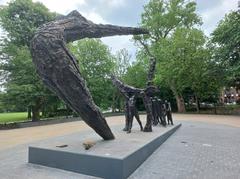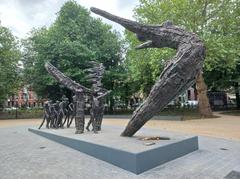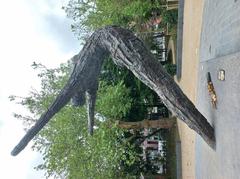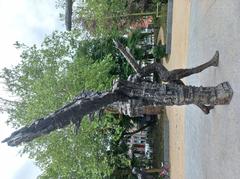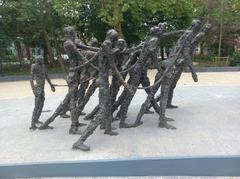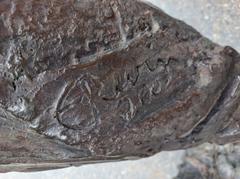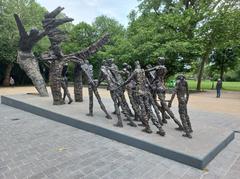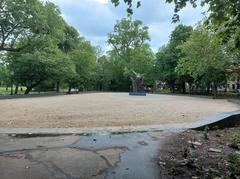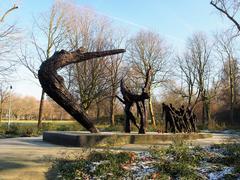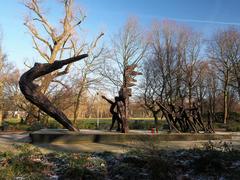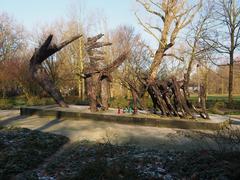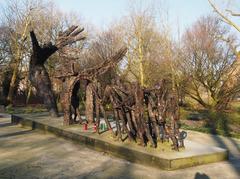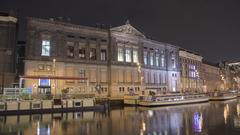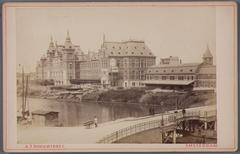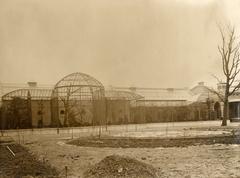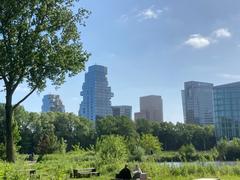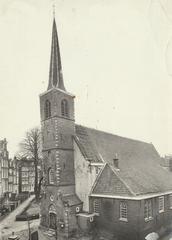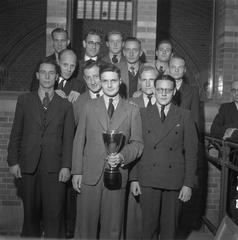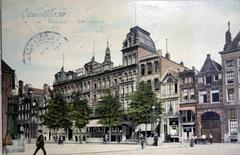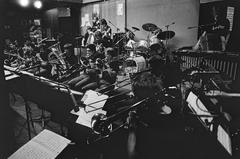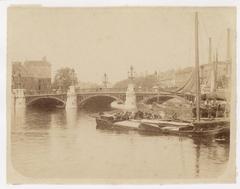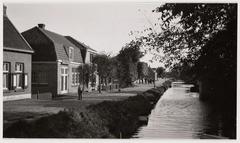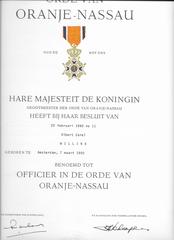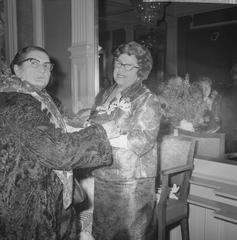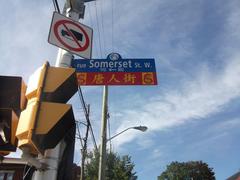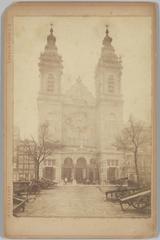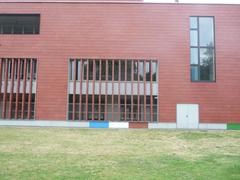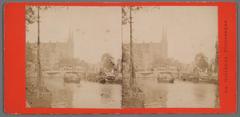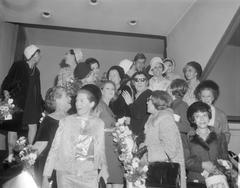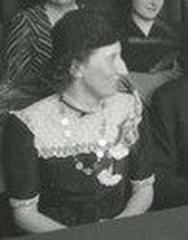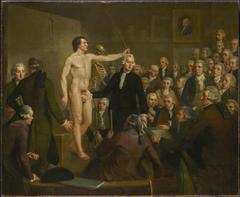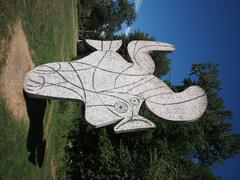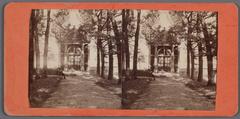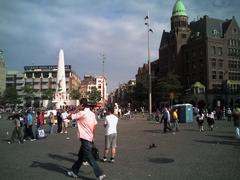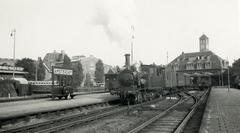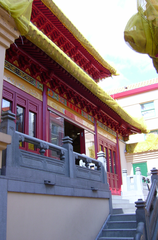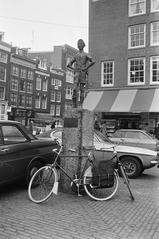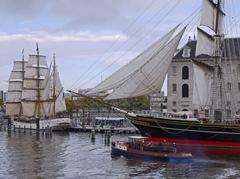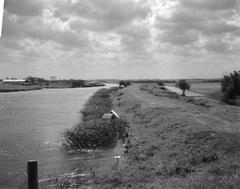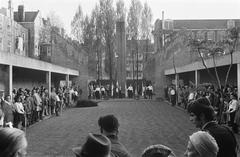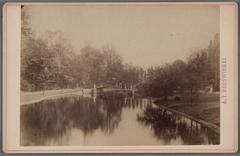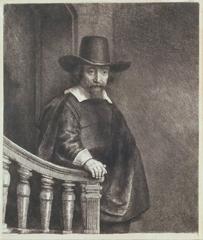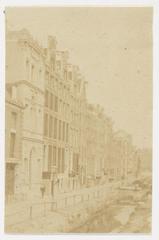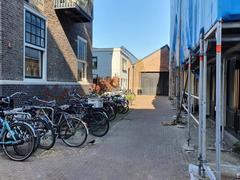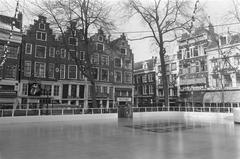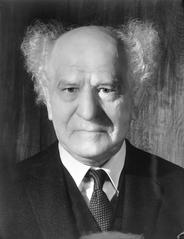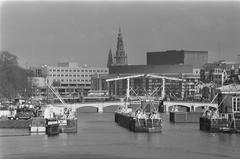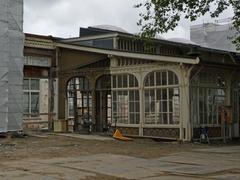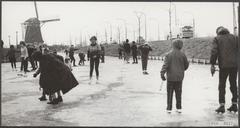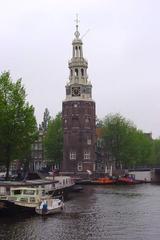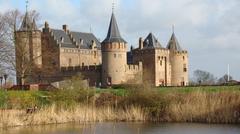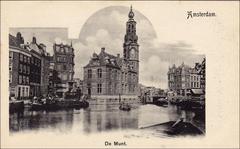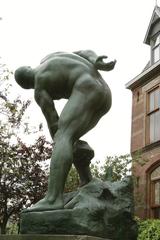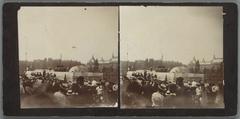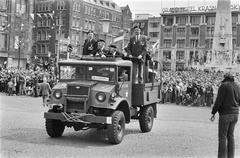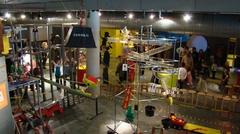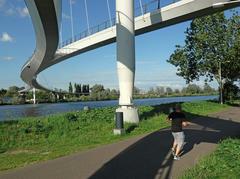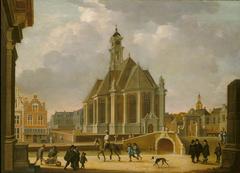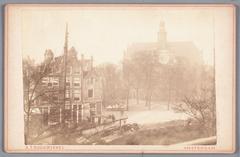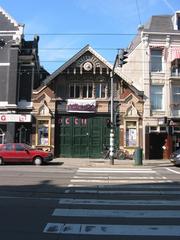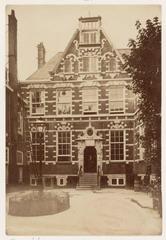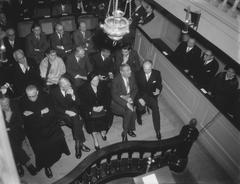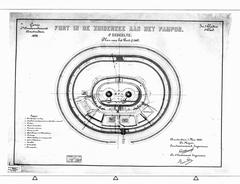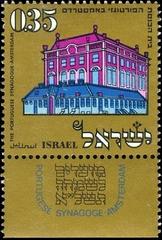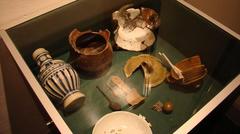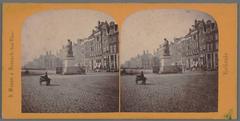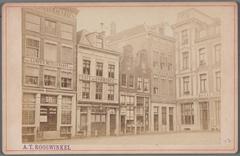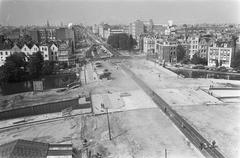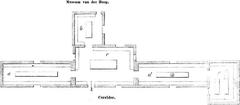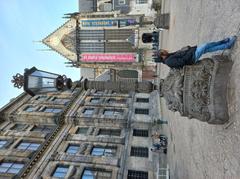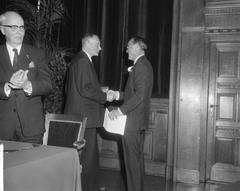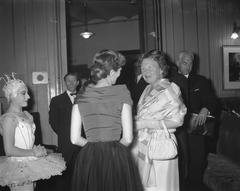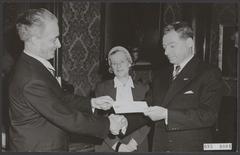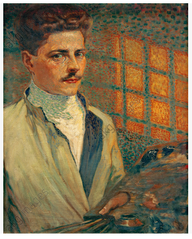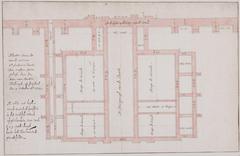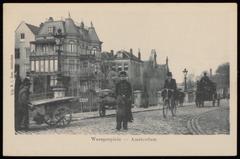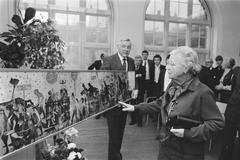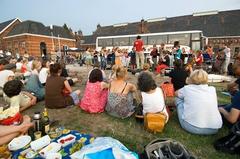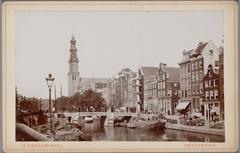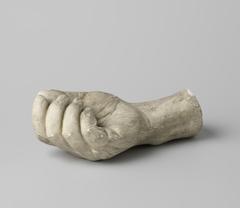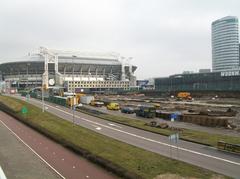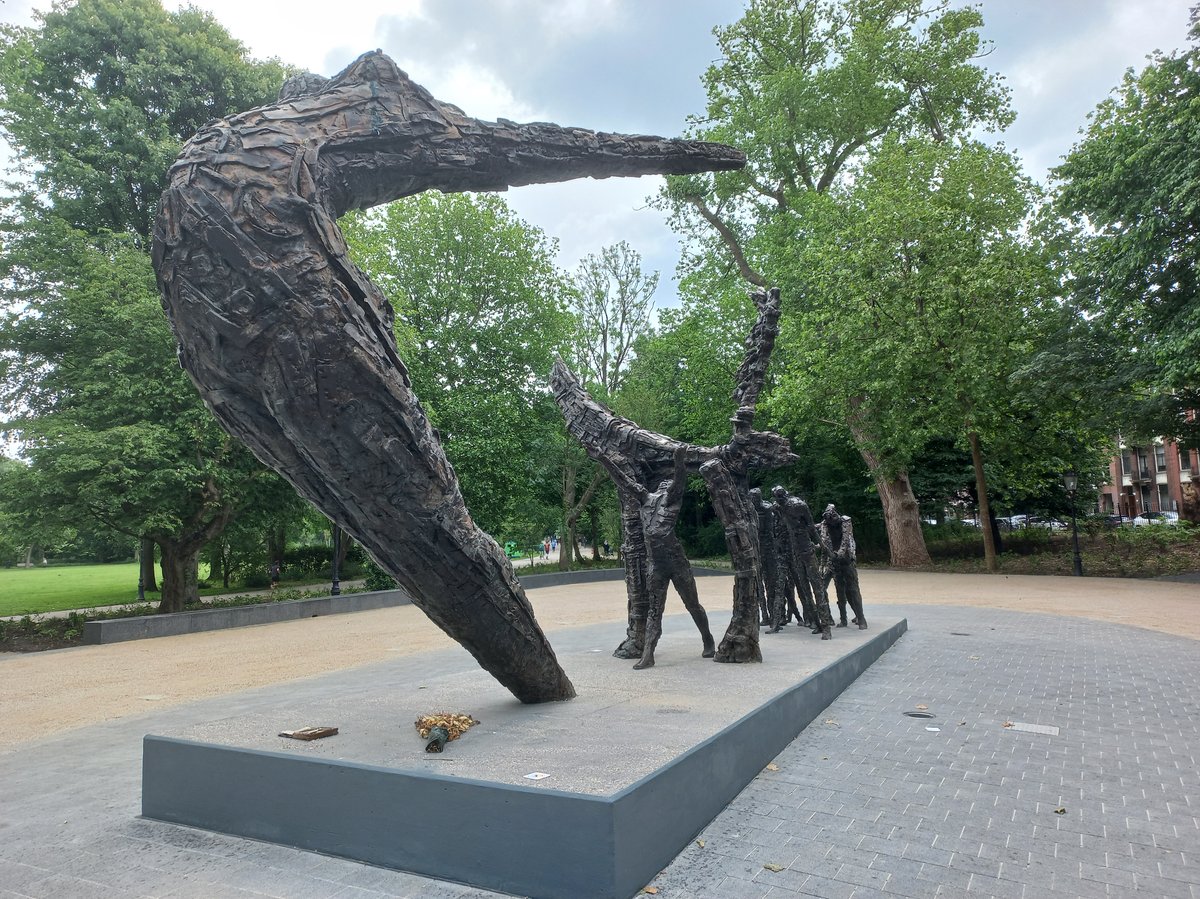
Nationaal Monument Slavernijverleden Amsterdam Visitor Guide
Publication Date: 01/08/2024
Introduction to Nationaal Monument Slavernijverleden
The Nationaal Monument Slavernijverleden, situated in the heart of Oosterpark, Amsterdam, stands as a poignant testament to the Netherlands’ historical involvement in the transatlantic slave trade. Officially unveiled in 2002, the monument serves to acknowledge and commemorate the dark legacy of slavery that persisted long after its abolition in Dutch colonies on July 1, 1863 (iamsterdam). This comprehensive guide aims to provide visitors with all necessary information, including the historical context, symbolism, practical visitor tips, and nearby attractions, ensuring a respectful and enriching experience at this significant site. Designed by Surinamese sculptor Erwin de Vries, the monument encapsulates the journey from slavery to freedom through its three main elements, each representing the past, present, and future (slaverymonuments). By exploring this guide, visitors will gain a deeper understanding of the monument’s cultural significance and the broader implications of the transatlantic slave trade on Dutch society.
Contents Overview
- Introduction
- Historical Context
- Symbolism and Design
- Annual Commemoration
- Location and Accessibility
- Visiting Hours and Tickets
- Best Time to Visit
- Guided Tours and Educational Programs
- Nearby Attractions
- Cultural Sensitivity
- Photography and Social Media
- Amenities and Facilities
- Safety and Security
- Accessibility for Disabled Visitors
- Events and Commemorations
- Educational Resources
- Respectful Behavior
- FAQ
- Call to Action
Historical Context
The Nationaal Monument Slavernijverleden serves as a poignant reminder of the Netherlands’ involvement in the transatlantic slave trade. The Dutch officially abolished slavery in their colonies, including Suriname and the Dutch Antilles, on July 1, 1863. However, the legacy of slavery and its impact on Dutch society continued to resonate long after abolition. The monument was unveiled in 2002, 139 years after the abolition, to acknowledge and commemorate this dark chapter in Dutch history (iamsterdam).
Symbolism and Design
The monument, designed by Surinamese sculptor Erwin de Vries, is a powerful artistic representation of the journey from slavery to freedom. It consists of three main elements:
-
The Past: This section depicts the brutal and dehumanizing conditions of slavery. The elongated bronze figures of enslaved Africans evoke the hull of a ship, symbolizing the Middle Passage. An over life-sized woman, her arms outstretched as she arches her body backward, recalls the ship’s prow, while the stern is personified by nude figures, shackled and staggering forward (slaverymonuments).
-
The Present: This element represents the breaking through the wall of resistance in modern times. It signifies the ongoing struggle against the remnants of slavery and the fight for equality and justice.
-
The Future: The final element symbolizes the longing for freedom and a better future. It reflects the hope and aspirations of the descendants of enslaved people for a world free from oppression and discrimination.
The rough-hewn metal texture of the sculptural surface abstracts the individual features of each figure, emphasizing the collective experience of enslaved Africans rather than individual stories (iamsterdam).
Annual Commemoration
Every year on July 1st, a significant event known as Ketikoti is held to commemorate the abolition of slavery in the Netherlands. This event includes speeches, performances, and educational activities, providing an opportunity for reflection and celebration of freedom.
Essential Visitor Tips for Nationaal Monument Slavernijverleden in Amsterdam
Location and Accessibility
The Nationaal Monument Slavernijverleden is located in Oosterpark, Amsterdam. This central location makes it easily accessible by various modes of transportation. Visitors can reach Oosterpark by tram, bus, or bike. The nearest tram stops are Eerste van Swindenstraat and Linnaeusstraat, both of which are a short walk from the park. For those using public transport, the GVB website provides detailed routes and schedules.
Visiting Hours and Tickets
The monument is open year-round and does not require an entry ticket. Visitors can explore the site at any time during park hours, which are generally from early morning until late evening. For up-to-date information on park hours, check the City of Amsterdam’s website.
Best Time to Visit
The best time to visit the monument is during the summer months (June to August) when the weather is pleasant, and the park is in full bloom. Visiting on July 1st can be particularly meaningful as it coincides with Ketikoti, the annual celebration of the abolition of slavery in the Netherlands. However, this day can also be crowded due to the festivities.
Guided Tours and Educational Programs
For a more in-depth understanding of the monument and its significance, consider joining a guided tour. Several local organizations offer tours that include the Nationaal Monument Slavernijverleden as part of a broader exploration of Amsterdam’s history with slavery. These tours often provide valuable context and personal stories that enhance the visitor experience. Check with local tour operators for availability and schedules.
Nearby Attractions
Oosterpark itself is home to several other important monuments and sculptures, making it a worthwhile destination for art and history enthusiasts. Notable nearby attractions include:
- The Scream (De Schreeuw): A memorial to film director Theo van Gogh, located within Oosterpark.
- Hortus Botanicus: One of the oldest botanical gardens in the world, located a short distance from the park.
- Tropenmuseum: A museum dedicated to world cultures, with exhibits that often touch on colonial history and its impacts.
Cultural Sensitivity
When visiting the Nationaal Monument Slavernijverleden, it’s important to approach the site with respect and cultural sensitivity. The monument commemorates a painful chapter in history, and many visitors may have personal connections to the legacy of slavery. Taking time to reflect and understand the significance of the monument can enhance your visit and show respect for those affected by this history.
Photography and Social Media
Photography is allowed at the monument, but visitors are encouraged to be mindful of their surroundings and the people around them. Sharing your experience on social media can help raise awareness about the history and significance of the monument. When posting, consider using hashtags like #NationaalMonumentSlavernijverleden and #Ketikoti to connect with others and contribute to the ongoing conversation about slavery and its legacy.
Amenities and Facilities
Oosterpark offers several amenities that can make your visit more comfortable:
- Restrooms: Public restrooms are available within the park.
- Cafes and Restaurants: There are several cafes and restaurants around the park where you can enjoy a meal or a coffee.
- Seating Areas: Benches and picnic areas are scattered throughout the park, providing places to rest and reflect.
Safety and Security
Oosterpark is generally safe, but it’s always wise to take standard precautions. Keep an eye on your belongings, especially in crowded areas, and be aware of your surroundings. The park is well-lit in the evenings, but if you plan to visit after dark, it’s best to go with a companion.
Accessibility for Disabled Visitors
The Nationaal Monument Slavernijverleden and Oosterpark are accessible to visitors with disabilities. The park features paved paths suitable for wheelchairs and strollers. Additionally, there are accessible restrooms available. For specific accessibility needs, it’s advisable to contact the City of Amsterdam’s accessibility services for more detailed information.
Events and Commemorations
Throughout the year, various events and commemorations take place at the Nationaal Monument Slavernijverleden. These events often include speeches, performances, and educational activities that highlight the history and ongoing impact of slavery. Attending these events can provide a deeper understanding and connection to the monument. Check the City of Amsterdam’s event calendar for upcoming events.
Educational Resources
For those interested in learning more about the history of slavery in the Netherlands, several resources are available:
- The Black Archives: Located in Amsterdam, this archive offers a wealth of information on the history and legacy of slavery and colonialism.
- Tropenmuseum: This museum frequently hosts exhibits related to colonial history and its impacts.
- Books and Articles: Numerous books and scholarly articles provide in-depth analyses of the Netherlands’ role in the transatlantic slave trade. Visiting local bookstores or libraries can yield valuable resources.
Respectful Behavior
Given the monument’s significance, visitors are encouraged to behave respectfully. This includes keeping noise levels down, not climbing on the monument, and being considerate of other visitors who may be there for reflection or commemoration.
FAQ
Q: What are the visiting hours for Nationaal Monument Slavernijverleden?
A: The monument is open year-round during Oosterpark hours, typically from early morning until late evening.
Q: Do I need a ticket to visit Nationaal Monument Slavernijverleden?
A: No, there is no entry fee for the monument.
Q: Are there guided tours available?
A: Yes, several local organizations offer guided tours that include the monument. Check with local tour operators for details.
Q: Is the monument accessible to visitors with disabilities?
A: Yes, Oosterpark and the monument have paved paths and accessible restrooms.
Q: What is the best time to visit the monument?
A: The best time to visit is during the summer months (June to August) or on July 1st for the Ketikoti celebration.
Call to Action
For more detailed information, visit the official website. Download our mobile app Audiala for more updates, and follow us on social media for the latest news and events.
Summary and Final Thoughts
Visiting the Nationaal Monument Slavernijverleden offers a profound opportunity to reflect on the Netherlands’ historical relationship with slavery and its enduring impact on society. As you navigate through Oosterpark and engage with the monument’s powerful symbolism, the experience will not only be educational but also deeply moving. The accessibility, lack of entry fees, and availability of guided tours make it easier for visitors to immerse themselves in this critical piece of history. Moreover, the nearby attractions, such as the Tropenmuseum and Hortus Botanicus, further enrich the visit by providing additional context and historical insights. By approaching your visit with cultural sensitivity and respect, you contribute to the ongoing conversation about slavery and its legacy. For more detailed information and to plan your visit, refer to the official website. Your visit not only honors the memory of those who suffered but also supports the collective journey towards understanding and reconciliation. (iamsterdam, slaverymonuments, City of Amsterdam, GVB website)
Sources and Further Reading
- Nationaal Monument Slavernijverleden: History, Tickets, and Visitor Information, 2024, iamsterdam
- Nationaal Monument Slavernijverleden: Symbolism and Design, 2024, slaverymonuments
- Essential Visitor Tips for Nationaal Monument Slavernijverleden in Amsterdam: Hours, Tickets, and More, 2024, City of Amsterdam
- Essential Visitor Tips for Nationaal Monument Slavernijverleden in Amsterdam: Hours, Tickets, and More, 2024, GVB website
- Essential Visitor Tips for Nationaal Monument Slavernijverleden in Amsterdam: Hours, Tickets, and More, 2024, official website
